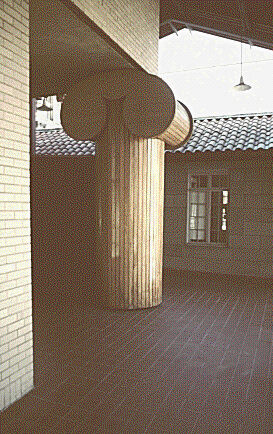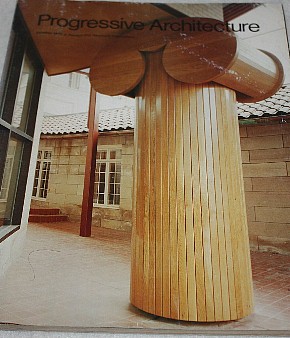| |
2005.10.13 13:41
Jimmy Venturi's new website...
Was Complexity and Contradiction in Architecture really "earth shattering?" Did it really change architectural history?
I was only 10 years old when C&C was published so I can't give any personal experience as to what happened then, but a few years ago someone at design-l wrote that "nobody read that precious book back then. Go and read the [bad?] reviews it got." I haven't checked out any of the reviews, but they are certainly a legitimate part of the continuum. C&C was not in the adult section of my local free library in 1972, but it was at the Northeast (Philadelphia) Regional library, and I can still remember seeing it for the first time. It looked "foreign" to me, clinical even, and once I started reading it, it just got worse--first sentence: "This is not an easy book," and that remained true for me in 1972. I bought my own copy of C&C at MoMA in 1975 (now a first year architecture student), and I started reading it again. I mentioned my reading to one of my teachers, Maria Romanach (daughter of Mario Romanach, sometime supplier of Cuban cigars to Mies van der Rohe), and she said, "Yeah, but you don't want to design that way!"
So, how many architects have since Complexity and Contradiction in Architecture designed:
nonstraightforward architecture
ambiguous architecture
complex and contradictory architecture vs. simple and picturesque architecture
"both-and" architecture
double-functioning element architecture
contradiction adapted architecture
contradiction juxtaposed architecture
different outside and inside architecture
difficult whole architecture
?
Are any of the above "architectures" really discussed when Post-Modern Architecture is discussed?
Charles Jencks published The Language of Post-Modern Architecture in 1977.
October 1977, the cover of Progressive Architecture looked almost exactly like this:

and the copy-cats were now uncontrollably out of the bag. I remember professors in school being literally afraid that students would start doing the same thing.
| |
2012.12.13 12:42
13 December
within the last twelve hours:
Writing Rome: Textual approaches to the city (again) . . . All Over the Map . . . "New Inquisitions on Architecture: From pluralism to narrative" . . . By leaving ideologies behind, architecture may fall into nihilism or else dissolve into a narrative dimension. Only through the mediation of a mythographic interpretation will the treatise and Utopia return to become part of the novel of architecture. . . . "Surrender: Ville Nouvelle Melun-Senart" . . . another, this time closer, look at Patent Office
Found out this morning I successfully bid on this...

October 1977
"In 1978 [sic], one of the covers of Progressive Architecture looked almost exactly like this, and the copy-cats were now uncontrollably out of the bag. I remember professors in school being literally afraid that students will start doing the same thing."
| |
|